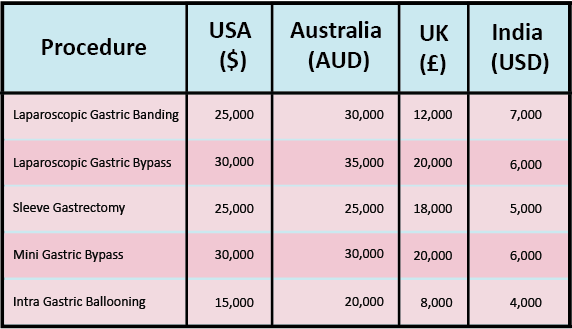“France might not be the country in the world with the most acute obesity problem but the number of people undergoing weight loss (bariatric) surgery has boomed in recent years.”
The number of people in France turning to surgical procedures to help reduce obesity has multiplied by 21 times over the last 3 decades, new figures show.
“Bariatric surgery“, which includes gastric bypass operations, effectively reduces the size of the stomach and can lead to dramatic weight loss.
 In 1997 only 2,800 operations of this kind were carried out compared to almost 60,000 in 2016 according to a report by the research and statistics agency Drees.
In 1997 only 2,800 operations of this kind were carried out compared to almost 60,000 in 2016 according to a report by the research and statistics agency Drees.
Part of that rise can simply be explained by the rise of obesity in France.
In 1997 some 8 percent of the population fell into the category of obese but by 2016 it was 15 percent.
However, figures released last year suggested the growing weight problem in France was more worrying.
The health study revealed that half of the French adults are now overweight.
The figures revealed that over the age of 30, some 56.8 percent of French men are overweight or obese and 40.9 percent of French women of the same age also tip the scales as obese or overweight.
France has taken radical steps to tackle obesity in recent years such as hiking taxes on sugary soft drinks and banning free refills of fizzy drinks in restaurants.
However, widening waistlines do not explain the boom of weight loss surgery in France given that the UK, where 27 percent of the population is considered obese and even the US, where obesity levels are at 38 percent, sees far fewer operations of this nature per head of population.
For example, 8.4 French people out of 10,000 have undergone some kind of weight loss surgery compared to 1.2 out of 100,000 people in Britain and 6.1 out of 100,000 people in the US.
 “Our health system is completely different from that of other countries. We do not limit the use of surgery,” Sébastien Czernichow, head of the nutrition service at Georges Pompidou Hospital in Paris told Le Figaro newspaper.
“Our health system is completely different from that of other countries. We do not limit the use of surgery,” Sébastien Czernichow, head of the nutrition service at Georges Pompidou Hospital in Paris told Le Figaro newspaper.
But in the UK, for example, a special commission carefully selects patients eligible for the surgery which is around 5,000 a year.
Another reason to explain the high numbers is that in France someone can qualify for the operation if their body mass index is over 35kg/M2 but in Denmark, the limit is set at 50kg/M2, in other words, a person who weighs over 145 kilos who has a height of 1.70 metres.
